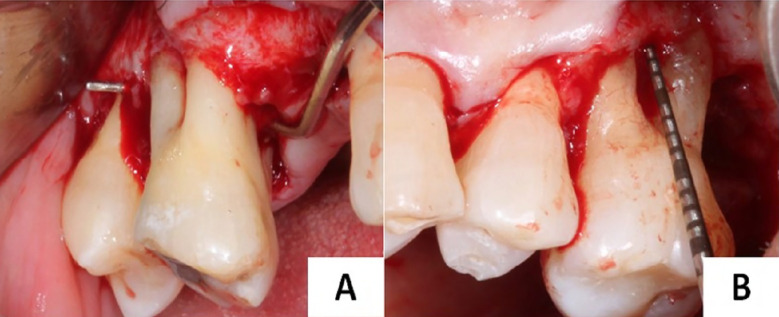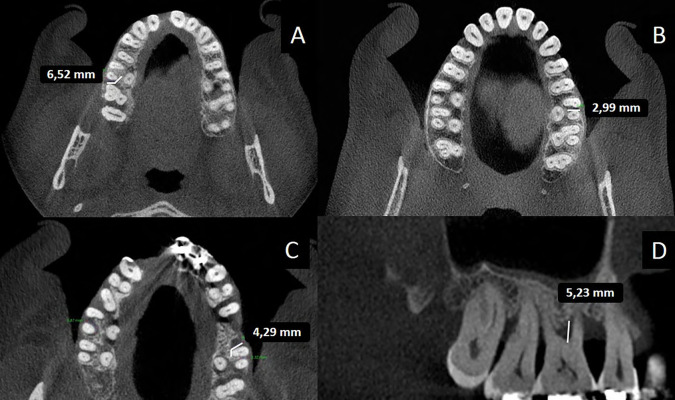Comparison of cone-beam computed tomography, clinical and surgical analysis for detection of maxillary molar furcation.
引用次数: 0
Abstract
ABSTRACT The aim of this study was to compare the performance of conebeam computed tomography (CBCT), clinical and surgical probing in assessing maxillary molar furcation involvement (FI). Furcation defects (n= 120) were assessed through CBCT, clinical and intra-surgical evaluation (ISE). Furcation Involvement, vertical and horizontal bone loss were assessed through clinical probing, CBCT and probing during ISE. Three trained radiologists evaluated CBCT images and intra- and interobserver agreement were calculated by Kappa test and Intraclass Correlation Coefficient (ICC). McNemar and Wilcoxon tests were used to compare clinical probing, ISE and CBCT. Accuracy, sensitivity, specificity, positive and negative predictive values were calculated to detect FI. Clinical findings showed 28 sites with Degree I, 25 sites with Degree II, and 8 sites with Degree III. Good intra- (k=1.00) and interobserver agreement (k=0.773) were observed. Intraobserver and interobserver agreement for horizontal bone loss were moderate, k=0.485 and k=0.549, respectively. Intra-surgical findings showed Degree I at 21 sites, and Degree II and Degree III FI at fifteen sites each. Clinical evaluation showed 75% agreement with ISE and 78% with CBCT. Accuracy for clinical detection of FI was 75%, while for CBCT evaluation ranged from 72.5% to 77.5%, considering the 3 observers. Significant differences were found at distal sites using CBCT (p<0.05). Clinical evaluation and CBCT showed similar results for the presence or absence of FI. Concerning horizontal and vertical bone loss, CBCT was not considered a precise examination method for incipient bone defects.



锥束计算机断层扫描与临床及外科分析对上颌磨牙分叉检测的比较。
本研究的目的是比较锥束计算机断层扫描(CBCT)、临床和外科探查在评估上颌磨牙分叉受累(FI)方面的表现。通过CBCT、临床和术中评估(ISE)评估功能缺陷(n= 120)。在ISE期间,通过临床探查、CBCT和探查评估分叉受累情况、垂直和水平骨丢失情况。三名训练有素的放射科医生评估CBCT图像,并通过Kappa检验和类内相关系数(ICC)计算观察者内部和观察者之间的一致性。McNemar和Wilcoxon试验用于比较临床探查、ISE和CBCT。计算准确性、敏感性、特异性、阳性预测值和阴性预测值来检测FI。临床表现为I级28个位点,II级25个位点,III级8个位点。观察到良好的内部一致性(k=1.00)和观察者间一致性(k=0.773)。观察者内部和观察者之间对水平骨丢失的一致性为中等,k=0.485和k=0.549。术中表现为I级21个部位,II级和III级FI各15个部位。临床评价与ISE的一致性为75%,与CBCT的一致性为78%。考虑到3名观察者,临床检测FI的准确率为75%,而CBCT评估的准确率为72.5%至77.5%。CBCT在远端部位发现显著差异(p
本文章由计算机程序翻译,如有差异,请以英文原文为准。
求助全文
约1分钟内获得全文
求助全文

 求助内容:
求助内容: 应助结果提醒方式:
应助结果提醒方式:


